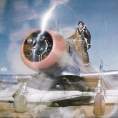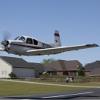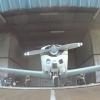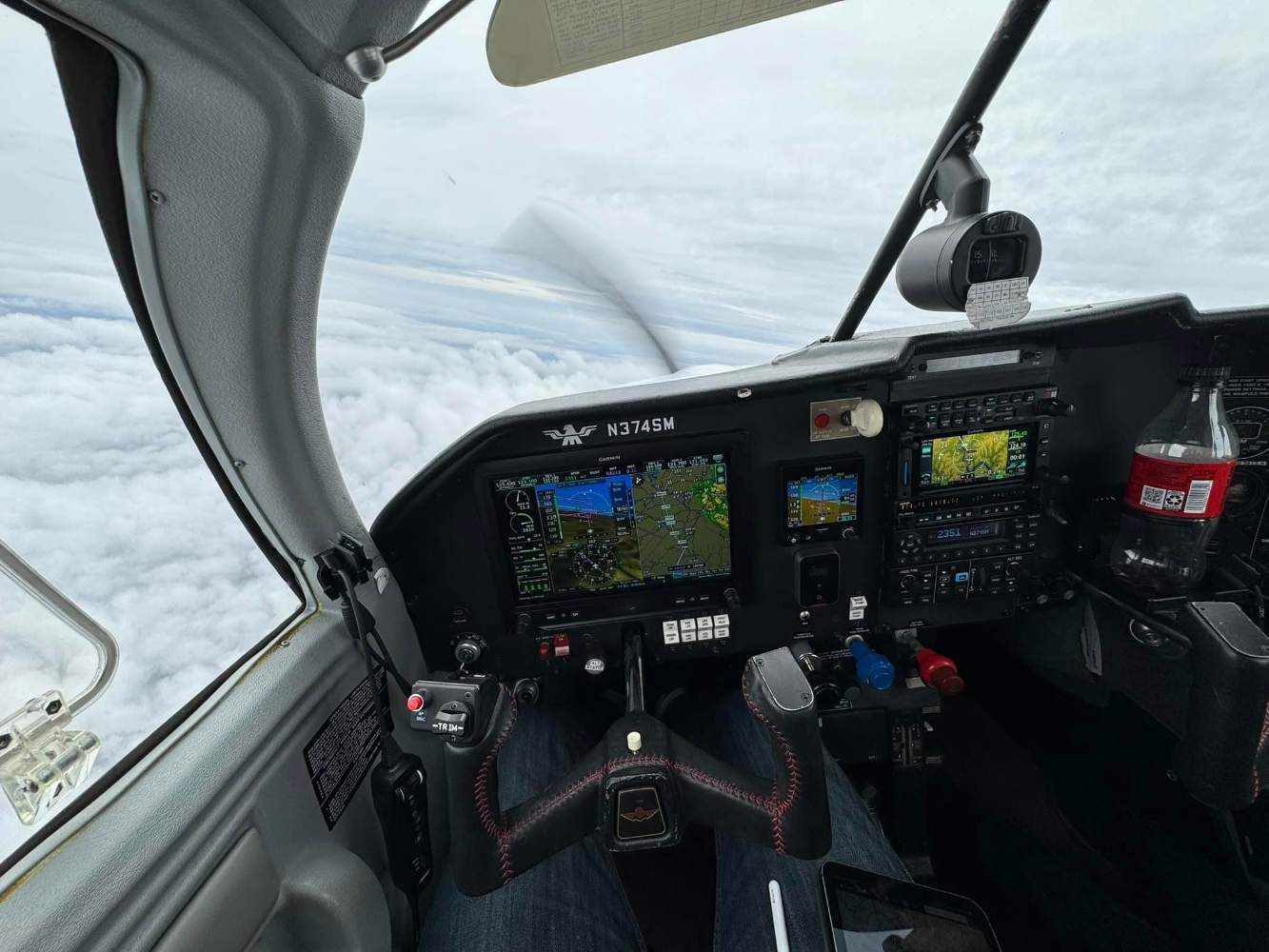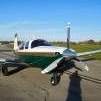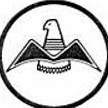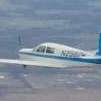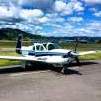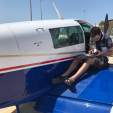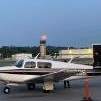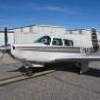Leaderboard
Popular Content
Showing content with the highest reputation on 04/22/2024 in all areas
-
It’s been some time but wanted to share with you the painting I did for last years silent auction at the summit. I Don’t know if the winner is someone that visits Mooneyspace but wanted to thank them for their contribution to the Gilliland (spelling corrected) foundation. Was very nice working with them and I was very happy with the results of my work as were the recipients. They run Cadillac aviation in Michigan. John6 points
-
Don't put the bait in the hangar! Your hangar should be a "food desert" they don't want any part of crossing into. Bait is food. Place the bait outside in run in cubes and not close to the hangar. Make sure no one, and I mean no one has any food in or near the hangar building. No food, no mice.4 points
-
From 2006-2009 I kept a Mooney Bravo at KSSF (Stinson in San Antonio). One night after getting back from a trip I forgot my flight bag on the passenger seat - in it was a sealed package of cheese and crackers - the vending machine variety. I might as well have given an engraved invitation to the mouse that found its way to that smell that was coming from the sealed cheese and crackers. Two days later when I went out to fly again - my flight bag was all chewed up and the empty wrapper was there without a crumb remaining, but one square of my leather seats was also all chewed up. Thankfully my map pocket on the seat back was matching leather so I pulled the seat and had my upholsterer sew in that “new” square and then replaced the map pocket with matching vinyl. Until now no one else knew that. That was the only time I know of that I left any “food” in the airplane or hangar and it didn’t take long to bite me, or at least my passenger seat. I never found out how he (or she) got in, nor did we ever find him (or her), but within a couple weeks the airplane went in for annual and we scoured every inch of the airplane making sure he or his friends weren’t camping out and that they didn’t leave anything else behind. - - - - It turns out they also like soy based insulation on Bose wiring. I bought a roll of this (https://www.collegehillshonda.com/product/4019-2317.html) and covered the Bose wires leading to the lemo jacks just to make sure. Hopefully they don’t like the extra spicy version.2 points
-
clean real well with mineral spirits, let dry, spray suspect area with white developer from dye penetrant system, run engine on ground for 10 min on ground at 1200 rpm, check if you see any traces of oil in the developer, if not go fly airplane for 20 min so all engine parts are at ops temperature, land airplane, pop cowl and look for oil traces, this will give you an idea where the leak is, if there are still doubts, clean everything again, spray smaller area with developer and run the engine again, no black magic, just persistence does the trick2 points
-
Going through the decision process on backup AI myself. My M20 F is going in for avionics upgrades in a couple of weeks it already has a GI 275 for AI but the HSI is analog. The HSI is getting replaced with another GI 275. Both GNS 430w are getting replaced with GTN 650. The panel mounted 496 will be replaced with an Aera 660. The airplane currently has a backup AI that is vacuum driven. It is the only instrument in the plane that will need vacuum and it just recently started to precess badly so it needs to be replaced. So, struggling with what to replace it with. Another vacuum driven AI, or a digital AI so I can remove the vacuum system. If digital AI then I wanted something that will last longer than the GI 275. Been looking hard at the RCA 2610-3. At 80% brightness it will last 3 hours on its internal battery which is plenty long to get me down alone with the Aera 660 with its own 4 hour battery which I can use for navigation while he master is off. Still have not made a final decision but but leaning towards ditching he vacuum pump and installing the RCA 2610 Sent from my iPad using Tapatalk Pro2 points
-
Pushing or pulling on the blade root should be fine, but the MT owner/operator manual should tell you what you need to know. There should also be a tolerance spec on any play in the blades, but it sounds like you're not really seeing any blade play.2 points
-
Are you sure it’s not the crankshaft clunking against the thrust bearing. There is light play in the fore aft direction there. Prop making noise does not sound right. Which prop do you have? Some have some allowable play, but not much.2 points
-
Final- https://data.ntsb.gov/carol-repgen/api/ ... 105237/pdf Docket- https://data.ntsb.gov/Docket?ProjectID=1052372 points
-
Honestly, I am not very interested in the “up to” time. That is marketing. Generally, it assumes a new battery and not one that has been in the aircraft for 5 years and many rechargings. I want to know the “down to” time, which is 30 minutes for the 275. I seriously don’t think that is the lawyers talking (caveat, I am one), that is what the engineers found in durability testing and the lawyers then said, well, you need to put it in the AFMS then. What happens if the OAT is -54 dF (have been there) and/or the battery(ies) are old? The other concern is the “system” concern. What if the system created by dual redundant 275’s, for example, develops a software error and the entire system goes to red “X’s”? Although those have been extremely rare, they have happened and some of it has been documented on this site. It got my attention. Don’t get me wrong, I like my 275’s. I love my 750. But I noticed that when certifying aircraft, the FAA insisted on building in non-single-point of failure redundancies. So in the old days, if the King 256 vacuum AI failed there was the electric AI. Not the best backup, I will grant you. But they were thinking “if Plan A goes completely wrong, there needs to be a separate Plan B.” The longer I fly the more I have come to appreciate that concept. If you own one of the 28V dual alternator aircraft perhaps you have a Plan B in the second alternator. But the older single alternator-single battery aircraft need a separate Plan B. I am not trying to pick an argument with anyone, I have met many of the people on this site and like and respect all of them. But I have had the alternator completely fail four or five times, the vacuum once, flown with the Master off and seen what there was left in the single battery when it came time to land, and flown all of these routes that I am talking about, they are not hypotheticals. I am just trying to pass on some wisdom. For the first, probably 8 years I owned my aircraft I did not have a backup AI other than the TC. I have fixed that problem in my own aircraft from advice I read on this site from other more experienced pilots. I am glad I did.2 points
-
It is impossible to seal everything. I keep a couple of bait stations in the hangar and a couple of ultrasonic devices plugged in and sometimes I've tossed a peppermint oil repellent bag in the baggage compartment. So far, I haven't had an issue.2 points
-
I would be very surprised if it was leaking a quart every four hours. Are you sure some of that isn’t blow-by?1 point
-
I would use a piece of closet rod and a vice to make the bend. Clamp one end with the closet rod. Then use a rubber mallet to help you bend it. If the closet rod is the wrong size then wood dowel. Go to NAPA and get some of the little springy things, drill a hole and insert. Then go to fabric store and buy some foam filling, some leather of your color and some contact cement (not the water based, the good smelly stuff) Cut and glue. Pilots can do interior stuff under Preventive Maintenance. Make it look better than factory and nobody will care. If you want to redo all the lower panels in leather. leatherhidestore.com Buy a couple of hides. There is different weights of leather hides.1 point
-
1 point
-
1 point
-
I’ve replaced two “G” engines with the IO550N. As long as one possesses the 310hp STC and your governor has been adjusted to the T20 standard, you’re approved to install the “N” engine (out of the box as 2700RPM / 310BHP) either as factory-new or factory-reman. Both have 2200-hour TBOs and zero-time logbooks, and are considered “approved”. The “N” engine is actually flat-rated to nearly 338hp, but is de-rated to 310. It is considered slightly more powerful than the “G”, per Minnis Aviation’s test criteria back when Bob Minnis established that STC. The “G” cylinder baffles are straight; whereas, the “N” baffles are tapered; the latter requiring a couple of sheet metal wedge pieces to fill gaps left behind that the “G” cylinders take up naturally by their straight baffle design. Steve1 point
-
A few years ago, when plane was outside, I tried that natural repellent….smelled minty….. well, the mice laughed at me….tore open the packets….and spread the stuff all over the cabin. At our house and my parents house, we have had some success with the sonic repellent….the old school audible type…. I wonder if one of those in the plane would keep them out. Metal plane would conduct that sound well. This assumes you are on grid….my own hangar is off grid…..but it seems like our airport has adequate predators to keep the small critters out of the hangar. We keep a cat at the house, but the family provides him too many treats for him to be effective as a hunter.1 point
-
I have owned my M20J for 20 years, 22 years CFI/CFII, based at Huntsville Exec (KMDQ). Happy to help if I can. Jim1 point
-
Considering that there is a TIT probe on the right side only, using TIT to set power doesn’t seem really precise to me. I lean my 2 richest cylinders (3&5) 50* LOP. set power big mixture pull enrichen to 18.5 find peak in 3 & 5 take a picture of the engine page with my phone lean to 50 LOP in those 2 cylinders, which is usually about 65* LOP on the TIT gauge. add back an inch or so of MAP if fuel flow is below what I want (16.5 GPH) Mine is a Platinum Edition engine, which supposedly has balanced injectors. It runs quite happily down to 100* LOP or more on the TIT gauge. -dan1 point
-
Make sure that SB M20-208 has been completed. I would not buy any Mooney without putting eyes on the steel cage.1 point
-
Thanks again John for this wonderful donation to the Mooney Summit! Your kind donation will help a downed Mooney pilots family in the time of their greatest need thru our Bill Gilliland foundation. This year's auction will be online and open to everyone. Stay tuned for how and when on www.mooneysummit.com1 point
-
I will watch with interest for answers/theories. After replacing my oil sump gasket a couple years ago I noted an increase in oil pressure (no connection implied). Haven’t figured out a reason or problem.1 point
-
1 point
-
1 point
-
I know he was here in M20J, I did not catch him, the aircraft in hangar and flies regularly, yet he manages to get in and have fun ! I had one in a K6cr that was in the trailer the whole winter, we are glad he loved pneumatics rather than wood & fabric or control cables... I need a cat in the hangar now1 point
-
Hole in nose gear well to belly. From there, through the opening for the trim chain. Or the cloth coverage of the Johnson bar hole cover. Maybe the air vents.1 point
-
1 point
-
This is also my recommendation. I sent them mine from the east coat. Either that or go SureFly. Sent from my iPhone using Tapatalk1 point
-
1 point
-
God help me if I ever track my expenses. The airplane would be up for sale the next day.1 point
-
Yeah, I guess; but, I would like to point out he is already 'in there' with TWO voltmeters1 point
-
1 point
-
1 point
-
1 point
-
If you are stranded away from home and cannot find a link, I don't see why a temporary repair could not be made using some .020 safety wire in place of the clip.1 point
-
Something isn’t making sense… usually, insurance is responsible for the confusion… a typical insurance requirement is 10hrs dual instruction + 10hrs solo prior to carrying passengers… And the insurance will be more expensive for the plane for a year… about 1amu more expensive… Find a Mooney specific CFI, and use them in your rented Mooney. By the time you are done with the 10/10 requirement… expect an additional year of experience to level the field…. the additional year of experience includes all of the important things like wind, rain, high DA, ice, thunderstorms, and freezing cold temps… Find Parker if it is an insurance issue… Showing up with your 10/10 without a year of experience probably won’t alleviate the situation… until you renew on the following year. All of the insurance companies will ask… how many hours in type and model… 100hrs and an IR are good for lowering your insurance cost…. How other people have handled this situation… new guy gets to pay for the additional one year insurance bump. Spread out over 100hrs it won’t be that bad… call your insurance guy or Parker for details… PP thoughts only, not a CFI or insurance guy… Best regards, -a- note: like entropy, insurance is always increasing… until you are 80. Then, it is just unavailable…1 point
-
There is no need to spend that much money. The trim switch, assuming it's the one that looks like this: https://images.app.goo.gl/NPnsfxHLKxHeZdUTA Is actually made up of three switches underneath. Those internal switches can fail, and can be independently replaced. They are Honeywell 1SX74-T switches and can be purchased for about $35 each from mouser: https://www.mouser.com/ProductDetail/Honeywell/1SX74-T?qs=10P5Hhl%2BD796P7tntVKlzg%3D%3D&countryCode=US¤cyCode=USD If you look through my thread earlier this year about my autopilot issue (which was just me being too hasty) there are some detailed pictures of the wiring of the switches. You can order a replacement switch or two or three, install them, and that should fix your problem. I'm happy to chat more about this if you want.1 point
-
I loved my M20F. I have a working relationship with my J. Looking at your plane brings back good memories.1 point
-
According to our local FAA reps at one of our IA seminars, if the replacement wing is the same part number as the original, tnen, no, it is a logbook entry. Part number replacements are not major repairs or major alterations. That's a good question. If the part came from the same model in the TCDS, e.g., the non-twist wing from another F model, I can see arguing that it's a replacement. If the wing came from a J, I can see somebody arguing that it's a different model in the TCDS and therefore an alteration. I can also see somebody arguing that if the wing isn't exactly the same part number, that it can't be replaced without a 337. There will inevitably also be those that say it's a major repair regardless (although we have at least some FAA reps that say otherwise). And there are some brave souls that say if it came from the same TCDS, regardless of model, it's good to go. I know Maxwells have done this sort of thing more than once, so they might have an opinion on the matter. They tend to err on the conservative side sometimes, which is understandable. Unless it's the same inspector in the same FSDO on the same day, you really can't count on the same results. Our most recent IA seminar was last month, and I was at multiple sessions where they were making an illustrative point that if the registration isn't current, then it's not really legally an airplane and you can't really sign off an annual. A week or so ago I was on an email distribution where one of the senior local FSDO guys said, oops, sorry about that, it turns out that's not right, there was a legal opinion letter from 2012 that says the opposite, so you can sign off an annual regardless of registration status. D'oh. If you really want to spin them up, ask whether ADs apply to Experimental category airplanes. I always thought the applicability statement in the AD was the final word, but apparently that's not even true, or at least that's one of the contentious issues. This was asked as a question in one of the sessions and what came out of it (from multiple senior FAA folks in the room) was that the bottom line is that there is not agreement on this topic, apparently due to conflicting regs or at least conflicting interpretations of regs. They have a difficult job in that a) the regs change fairly frequently, b) interpretations of the regs change even more frequently. Court rulings, legal opinion letters, and even management changes and industry developments can all change how the agency operates as a whole and how individuals operate. An individual inspector may have gotten burned on a particular topic and now takes a different view than previously, etc., etc. From all of that I thnk it's the nature of the beast that there will always be differences among inspectors and FSDOs and the whole thing changes with time. So all you can do is do the best you can at the time given the best info you have at the time. There's *always* somebody to tell you you're doing it wrong, regardless of what you do. That's just part of it, too.1 point


